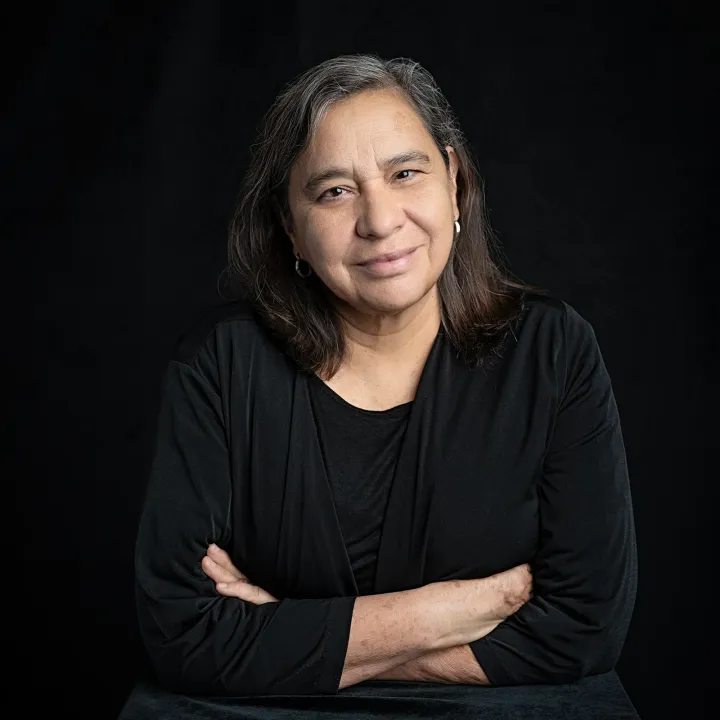Por Ryma Sheermohammadi

Hibatullah Akhundzada, líder del gobierno talibán, ha aprobado una nueva ley de "Promoción de la virtud y prevención del vicio", compuesta por un preámbulo, cuatro capítulos y 35 artículos. Esta legislación establece directrices para la promoción de la virtud y la prevención del vicio, así como las funciones de los agentes encargados de supervisar su cumplimiento, conocidos como "muhtasib". Su misión es asegurar el respeto a los principios de la ley islámica sharía, y en caso de violaciones, deben remitir a los infractores a las autoridades judiciales del régimen talibán.
El alcance de esta normativa es amplio y permite a los muhtasib regular el comportamiento, vestimenta y apariencia de los ciudadanos afganos. El artículo 13 establece que las mujeres deben cubrirse completamente el cuerpo, incluyendo la cabeza, con un chador. Se prohíbe el uso de ropa ligera, corta o ajustada. Además, se introduce el concepto de "ocultamiento de la voz", que prohíbe a las mujeres cantar, dar discursos o incluso recitar el Corán en público, ya que su voz es considerada una "awra" (algo que debe ser cubierto). Los muhtasib tienen también el mandato de evitar que se escuche la voz de las mujeres o música desde las viviendas. En la cláusula 8 del artículo 13 se señala que, si una mujer debe salir de su hogar por necesidad, está obligada a cubrir su voz, rostro y cuerpo.
La ley otorga a los muhtasib el poder de detener y castigar con azotes a cualquier mujer o niña que no cubra su rostro. Asimismo, se prohíbe a los conductores de vehículos de transporte llevar a mujeres que no usen velo o no vayan acompañadas por un mahram (tutor varón, según la ley islámica). También se prohíbe la mezcla de hombres y mujeres en vehículos y espacios públicos.
En el artículo 22, la ley también impone restricciones a los hombres, como la prohibición de usar corbata, afeitarse la barba o cortarse el cabello con estilos modernos. El concepto de "awra" en el caso de los hombres incluye el área desde debajo del ombligo hasta las rodillas, incluyendo estas. La normativa regula, además, los medios de comunicación, prohibiendo que la televisión, radio y otros medios se usen de manera "indebida". Previamente, los talibanes ya habían emitido una directiva que prohibía la emisión de series con presencia femenina, así como cualquier contenido contrario a la sharía.
El artículo 17 regula la prensa y la información, prohibiendo la publicación de contenidos que contradigan la sharía o que insulten a los musulmanes. Además, prohíbe el uso de imágenes de seres vivos en dichos contenidos. La ley aplica en todas las instituciones y lugares públicos de Afganistán, afectando a todos los ciudadanos y residentes. Los críticos ven esta normativa como una violación de los derechos humanos y de la dignidad humana. El Ministerio de Promoción de la Virtud del régimen talibán ha reportado que, en el último año, más de 13,000 personas han sido arrestadas por "acciones inmorales", y más de 280 miembros de las fuerzas de seguridad han sido despedidos por no dejarse crecer la barba.
Educación prohibida para las niñas
A medida que el nuevo año escolar comienza en muchos países, las niñas afganas mayores de 12 años siguen sin poder asistir a la escuela. Hace dos años, el 21 de marzo de 2022, los talibanes prometieron reabrir las escuelas, permitiendo a las niñas de educación primaria y secundaria, así como a las universitarias, regresar a las aulas. Sin embargo, dos días después, esta promesa fue revocada, y se prohibió la asistencia a las escuelas de niñas mayores de 12 años o aquellas que hubieran alcanzado la pubertad. Desde entonces, millones de mujeres y niñas afganas han sido excluidas de la educación y el trabajo, confinadas a sus hogares.
El régimen talibán entre 1996 y 2001: un precedente oscuro
Durante el primer gobierno talibán (1996-2001), las mujeres afganas vivieron bajo severas restricciones. Debían usar el burka en público, ya que, según los talibanes, "el rostro de una mujer es una fuente de corrupción para los hombres". Las mujeres no podían trabajar, y a partir de los ocho años, se les prohibió recibir cualquier tipo de educación, excepto la lectura del Corán.
Aquellas que deseaban estudiar lo hacían en escuelas clandestinas, corriendo el riesgo de ser ejecutadas si eran descubiertas. Además, las mujeres no podían recibir tratamiento médico de doctores varones sin la compañía de un mahram, lo que limitaba su acceso a servicios de salud. Muchas mujeres fueron azotadas y ejecutadas públicamente por violar las estrictas leyes impuestas por los talibanes.
Matrimonios forzados y otras restricciones
El matrimonio forzado de niñas menores de 16 años fue común durante este periodo. Amnistía Internacional reportó que el 80% de los matrimonios en Afganistán eran forzados. Además, otras restricciones limitaban la libertad de las mujeres: no podían usar tacones altos, ya que se consideraba que el sonido de sus pasos podía excitar a los hombres; no podían hablar en voz alta en público; y las ventanas de las viviendas debían ser cubiertas para evitar que las mujeres fueran vistas desde la calle. Las mujeres también tenían prohibido aparecer en medios de comunicación o participar en reuniones públicas. Todas las ventanas de los pisos bajos y del primer piso de las viviendas debían ser pintadas o cubiertas para evitar que las mujeres fueran vistas desde la calle, Se prohibió la fotografía, filmación y exhibición de imágenes de mujeres en periódicos, libros, tiendas o en el hogar. Los nombres de lugares que incluyeran la palabra "mujeres" debían ser modificados; por ejemplo, "Jardín de Mujeres" se cambió a "Jardín de Primavera". Se prohibió a las mujeres montar bicicletas o motocicletas, incluso si iban acompañadas por un mahram. Se prohibió a las mujeres tomar taxis sin un mahram. Se introdujeron autobuses separados para hombres y mujeres para evitar la mezcla en un mismo vehículo.
La vida de las mujeres rurales fue menos afectada por estas restricciones, ya que vivían en un entorno más pequeño con menos recursos. Sin embargo, al viajar a ciudades cercanas, las mismas limitaciones urbanas se aplicaban a ellas
La represión en el ámbito laboral y educativo
En septiembre de 1996, los talibanes emitieron un decreto que prohibía a las mujeres trabajar, afectando al 25% de la fuerza laboral en el sector gubernamental. La prohibición de emplear a mujeres en la educación afectó a cientos de miles de niñas y niños, ya que la mayoría de los maestros de educación primaria eran mujeres.
Atención sanitaria bajo el régimen talibán
El acceso de las mujeres a los servicios de salud también fue severamente restringido. Los médicos varones no podían tratar a mujeres sin un mahram, y muchas clínicas fueron clausuradas, lo que resultó en un aumento de muertes por enfermedades no tratadas. En octubre de 1996, se prohibió el acceso de las mujeres a los baños tradicionales y públicos, al considerarse que estos eran no islámicos. Estos baños, que eran esenciales en países con escaso suministro de agua corriente, llevaron a que la ONU previera un aumento en los casos de sarna e infecciones vaginales entre mujeres privadas de métodos de higiene y atención sanitaria. En junio de 1998, los talibanes prohibieron a las mujeres asistir a hospitales públicos en la capital, permitiéndoles únicamente participar en secciones de hospitales públicos destinados exclusivamente a mujeres. Sólo un hospital en Kabul donde podían recibir tratamiento.
Castigos públicos
Los castigos por violar las leyes talibanes se ejecutaban públicamente en estadios deportivos y plazas, donde las mujeres eran azotadas o incluso ejecutadas por infracciones menores. Los castigos severos por cosas tan simples como el uso de esmalte de uñas o la negativa a llevar el burka fueron comunes, destacando el brutal control que los talibanes ejercían sobre las mujeres.
Según informes de derechos humanos:
- En octubre de 1996, se cortó el dedo pulgar de una mujer por usar esmalte de uñas.
- En diciembre de 1996, Radio Sharía anunció que 225 mujeres en Kabul fueron arrestadas y castigadas por violar las leyes de vestimenta islámica. Este castigo fue dictado por un tribunal, y las mujeres fueron condenadas a latigazos.
- En mayo de 1997, cinco trabajadoras internacionales de CARE con permiso del Ministerio del Interior para realizar investigaciones para un programa de nutrición de emergencia fueron forzadas a bajar de su vehículo por miembros de la policía talibana y golpeadas con látigos metálicos y de cuero de más de 1.5 metros de largo.
- En 1999, una madre de siete hijos fue ejecutada frente a 30,000 espectadores en el Estadio Ghazi de Kabul por asesinar a su esposo. Estuvo tres años en prisión y sufrió torturas antes de su ejecución. Sin embargo, se negó a declarar su inocencia en un intento de proteger a su hija, que se decía era la verdadera culpable.
- Una joven afgana llamada Bibi Aisha fue prometida a una nueva familia a través de un método tribal de resolución de conflictos. Cuando ella intentó escapar de la violencia, su nueva familia la encontró y un comandante talibán ordenó que se le castigara para que sirviera de lección a otras, con el fin de evitar que las demás chicas del pueblo hicieran lo mismo. Le cortaron las orejas y la nariz y la dejaron en las montañas para que muriera, pero ella sobrevivió.
- Un caso notable fue el de una joven de 22 años llamada Hossai en julio de 2010, cuyo asesinato causó gran revuelo. Cuando se le ordenó que dejara su trabajo, ella se negó a obedecer, y después de ser sometida a numerosas torturas, fue baleada y asesinada.
- En 2013, Sushmita Banerjee, una autora india, fue asesinada por los talibanes por desobedecer sus órdenes. Ella se había casado con un comerciante afgano y se había mudado a Afganistán.
Estos ejemplos ilustran la crueldad y represión que las mujeres afganas han soportado bajo el régimen talibán, una realidad que se repite hoy en día, mientras el mundo observa con indiferencia.
*Ryma Sheermohammadi es traductora e intérprete con más de dos décadas de experiencia trabajando con organizaciones internacionales como las Naciones Unidas, la Unión Europea y la Organización Internacional para las Migraciones.
Su labor ha sido reconocida con el Premio Valor 2022 en Madrid y una de las 153 mujeres homenajeadas por el ayuntamiento de Barcelona en el proyecto de Mapa Metro Barcelona ciudad de mujeres 2023.
Las opiniones expresadas son responsabilidad de sus autoras y son absolutamente independientes a la postura y línea editorial de Opinión 51.






Comments ()